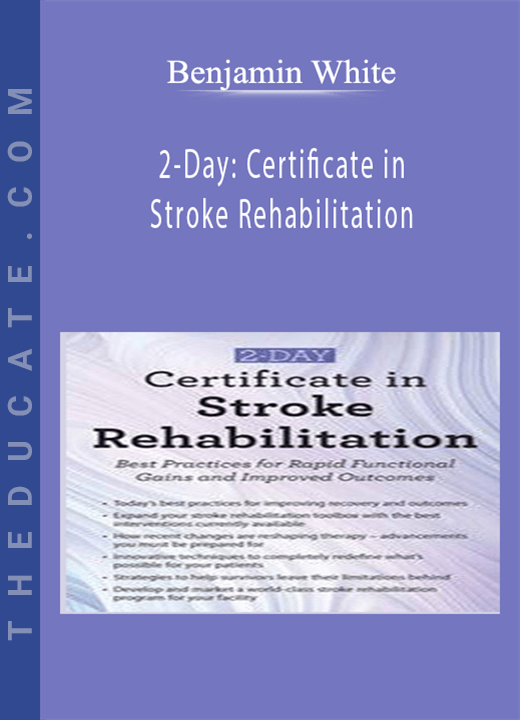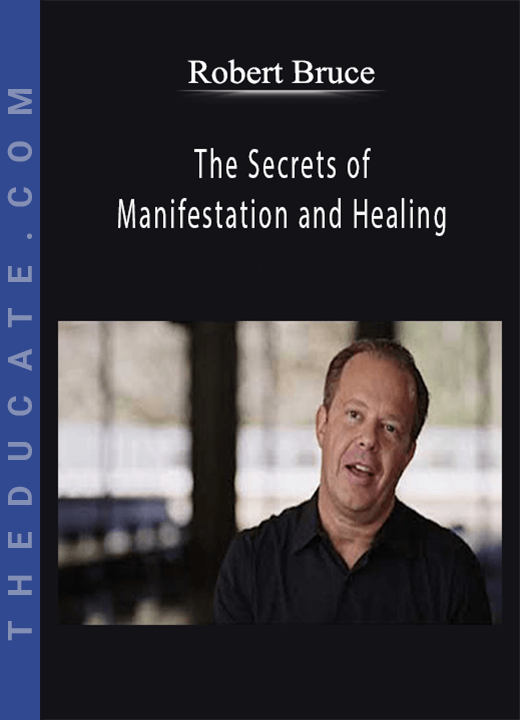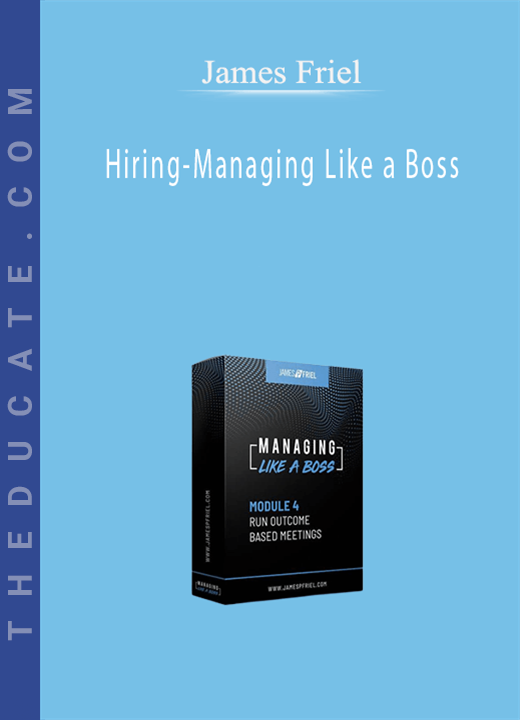Description

2-Day: Certificate in Stroke Rehabilitation: Best Practices for Rapid Functional Gains and Improved Outcomes – Benjamin White
Working with stroke patients is deeply meaningful and incredibly rewarding. And you strive to help each client who’s counting on you to facilitate the improvements that can change their lives.
But some patients are so impaired that treatment becomes overwhelming. Others make exceptional gains in clinical settings, only to hit a wall in less controlled environments. As time passes without results, even the most promising patient can feel the sun setting on the person she used to be, growing disengaged and depressed — convinced she can’t progress further with therapy.
If you’re not up to speed on the latest treatment strategies, she might be right.
Earn your Certificate in Stroke Rehabilitation and learn how to apply innovative techniques that completely redefine what’s possible for your patients!
Built on today’s best practices, this program will show you how to develop and market a world-class stroke rehabilitation program with tools and strategies that have helped countless survivors leave their limitations behind, even 20 years post stroke.
Leave this one-of-a-kind training recording knowing that when your next patient tells you how she hopes to return to work or stay active with her grandkids, you’ll be able to confidently guide her toward rapid functional improvements with the best methods available in neurological rehab!
- Discuss the latest advances in stroke recovery and their implications for therapy.
- Review strategies for identifying the root causes of post-stroke impairments faster.
- Demonstrate how to enhance function with dual task interventions.
- Describe techniques for improving bed mobility, transfers, and gait with less strain.
- Demonstrate how to reduce spasticity and restore limb use with constraint-induced movement therapy.
- Design an effective home program.
- Discuss a more functional, person-centered approach to resolving impairments.
- Review parameters for safely intensifying rehab.
- Determine effectively strategies for helping difficult or depressed patients become more engaged in their recovery.
- Develop a stroke rehabilitation program that combines traditional and innovative treatment strategies.
- Evaluate progress measures used to justify therapy.
- Describe strategies for effectively marketing a stroke rehabilitation program.
HOW RECENT CHANGES IN STROKE TREATMENT ARE RESHAPING THERAPY
- Hot topics and innovations in stroke rehabilitation
- What stroke rehabilitation will look like in 1, 5, and 10 years
MASTER CLINICAL REASONING AND ASSESSMENT SKILLS FOR STROKE REHABILITATION
Practice today’s best evaluations for:
- Gait, balance and coordination
- Strength, mobility and stability
- Upper extremity function
- Lower extremity function
- Executive function
EXPAND YOUR STROKE REHABILITATION TOOLBOX
Practice effective techniques you can use immediately to:
- Ignite neuroplasticity for breakthrough results
- Restore functional strength more quickly
- Enhance function and multi-tasking ability
- Reduce spasticity
- Restore limb use
- Resolve impairments from a more functional, person-centered perspective
- Improve bed mobility, transfers, and gait with less strain
- Design a more effective home program
- Intensify therapy safely and effectively
- Re-engage difficult or depressed patients
INTEGRATE MULTIPLE APPROACHES FOR BETTER OUTCOMES
Practice combining:
- Constraint-induced movement therapy
- Bimanual therapy
- Dual task interventions
- Balance and gait training
- Taping
- Functional activities
- Therapeutic exercise
- Neuroplasticity-building interventions
DESIGN ROBUST, INNOVATIVE PLANS OF CARE FOR YOUR PATIENTS
Practice developing treatment strategies for specific impairments related to:
- Ataxia
- Hemiparesis
- Neglect
- Pusher syndrome
- Spasticity
- Subluxation
- Gait and mobility
- Decreased sensation
- Reduced flexibility
- Muscular weakness
- Timing/coordination
PUT KNOWLEDGE TO PRACTICE
- Case study 1: Correctly select the root cause of impairment
- Case study 2: Apply advanced gait training and multitasking techniques
- Case study 3: Improve postural control and mobility with an agitated patient
- Case study 4: Overcome barriers to effective strategy implementation
- Case study 5: Adjust your plan of care for surgical and technological advances
DON’T LEAVE MONEY ON THE TABLE!
- Coding and billing updates for stroke rehabilitation
- Justify therapy with the right progress measures
- Avoid denials and audits with these tips
DEVELOP A WORLD-CLASS STROKE REHABILITATION PROGRAM FOR YOUR FACILITY
BECOME YOUR REGION’S GO-TO STROKE SPECIALIST
- The insider’s guide to specialization and professional networking
- Build referrals faster: effectively marketing your stroke rehabilitation program







6 reviews for 2-Day: Certificate in Stroke Rehabilitation: Best Practices for Rapid Functional Gains and Improved Outcomes – Benjamin White
There are no reviews yet.